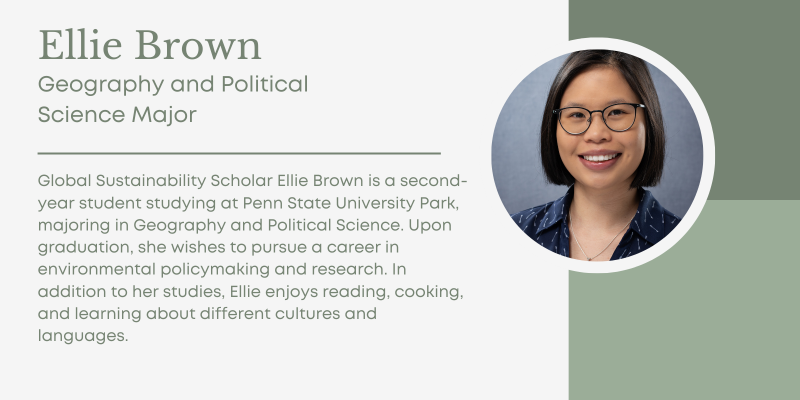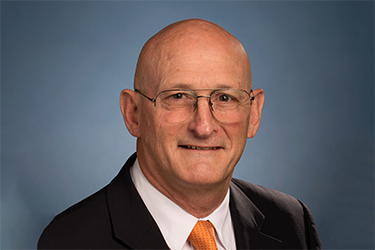Ellie Brown, Sustainability Scholar, Post-travel Blog, Denmark
The Global Sustainability Scholars program, managed by Penn State Global and Penn State Sustainability, selects 10-15 students annually who will use their study abroad experience to advance the UN Sustainable Development Goals. Scholars engage with the sustainability community at Penn State before departure, build global sustainability knowledge abroad, and apply these skills upon return. Applications are due in mid-September each year; please check the website for details!
Growing up, I always knew I wanted to travel the world and study abroad. However, I had trouble figuring out exactly where to go. At the age of eight, I was fascinated with Japan. After taking my first French course in middle school, I wanted to visit Paris. By the beginning of my first year in college, South Korea was at the top of my list. Ultimately, however, I surprised my family by choosing to study at DIS Abroad in Copenhagen, Denmark.
During my time as a geography major at Penn State, a recurring theme in my courses was the need for the world to do more to reduce emissions and mitigate the impacts of climate change. Given the urgency of this issue, visiting one of the world’s most sustainable capitals would greatly benefit my studies. Copenhagen has set an impressive goal of achieving carbon neutrality by 2025, primarily through centralized biomass heating and wind and solar power to minimize energy consumption and reduce carbon emissions. Additionally, the program includes two built-in travel weeks, allowing you to explore another Danish community and a different country with your core course for broader perspectives on sustainability.
Biking
Upon my arrival, one of the first cultural surprises I encountered was the city’s extensive biking infrastructure. Back home in suburban Pennsylvania, cycling on the main roads can be perilous due to rough street conditions and insufficient space for cyclists alongside vehicles. In contrast, Copenhagen offers a vastly different experience. It is one of the safest cities in the world for biking because cyclists have designated lanes, and cars must yield to them. I learned from one of my professors that when it snows and the roads become icy, the city prioritizes cleaning the bike lanes over car roads.
Another professor noted that 69% of residents do not own a car, opting to ride bikes or use public transportation. Most vehicles you encounter belong to those commuting from outside the city. The city has also made significant efforts to transform former parking lots into green spaces, such as parks, enhancing well-being and creating opportunities for social interaction.
Five-minute City
During my first week, I was also surprised by the abundance of supermarkets and convenience stores. It felt as if there was either a 7-Eleven or Netto, the leading grocery chain in Denmark, on every corner. After some time, I learned that this was intentional. This concept is known as “The 5-Minute City,” meaning all your daily necessities—schools, retail stores, cafes, office buildings, residential areas, and grocery stores—are within a five-minute walk or bike ride from wherever you are. The emphasis on local businesses and services reduces travel needs and fosters a sense of community among residents.
Recycling
Copenhagen’s recycling system is also more complex than the United States’. Each household has several different waste containers to sort their trash, including bins for food waste, plastic, food and beverage cartons, paper, cardboard, glass, and metals. The first time I had to take out the trash, the complexity was overwhelming, as I was used to the simpler recyclables and non-recyclables system back home. Additionally, at some grocery stores and gas stations, you can return deposit-marked empty bottles and cans to reverse vending machines for a small amount of cash.
Industry Innovations
During the semester, I worked on a sustainability project with a leading Danish shipping company in one of my elective courses, the Nordic Sustainability Partnership. While I can’t share too many details, it was a fantastic experience helping the country explore potential opportunities for its decarbonization transition. I discovered that many companies in Denmark are adopting more environmentally and socially sustainable practices, whether for financial gain, personal ethics, or to comply with current legislation.
Samsø
In early February, my Sustainable Development in Northern Europe course took a three-day trip to the island of Samsø, off the coast of Jutland. In 1997, the island won a government competition to become a model for renewable energy communities. Before that, it depended entirely on oil and coal from the mainland. Today, the people of Samsø heat their homes using straw burning in a central heating system, and some vehicles are powered by biofuels grown on the island. Additionally, 100% of the island’s electricity comes from wind power. During my stay, I had the incredible opportunity to visit one of the four district heating plants, climb a farmer’s wind turbine, and visit the Energy Academy, a community hall and meeting place for energy and local development. I was surprised to learn that citizens have significant agency in decision making, such as helping choose where to install new wind turbines. Although more technological advancements are needed before larger cities, like Copenhagen or New York, can adopt a similar model, Samsø provides a glimpse into what a decentralized energy future could look like.
Stockholm and Sustainable Travel
Finally, a month later, I traveled to Stockholm, Sweden, with the same class. Unlike other groups that flew to their destinations, our class opted for a more environmentally friendly approach, taking a bus and train. According to the European Environment Agency, planes emit, on average, 4.84 times more greenhouse gas emissions than trains, making train travel one of the most sustainable options available.
Secondhand Stores
During our time in Sweden, we visited ReTuna Återbruksgalleria, the world’s first recycling mall in Eskilstuna. Opened in 2015, this unique mall exclusively features secondhand and recycled goods in various shops, including a sports store, electronics outlet, toy store, and fashion boutique. Visitors can quickly drop off unwanted and reusable items adjacent to the city’s recycling center. The staff sorts these donations to determine what can be reused, distributing suitable items to the mall’s shops. Store owners then have the option to repair, modify, or improve these items for resale. Here, I bought a beautiful trench coat for the equivalent of $40 after I accidentally ripped the sleeve of my winter jacket. This innovative model gives materials a second life and ensures they are fully utilized. Furthermore, the mall offers educational programs for schools to teach students about design and how to upcycle commonly donated objects.







